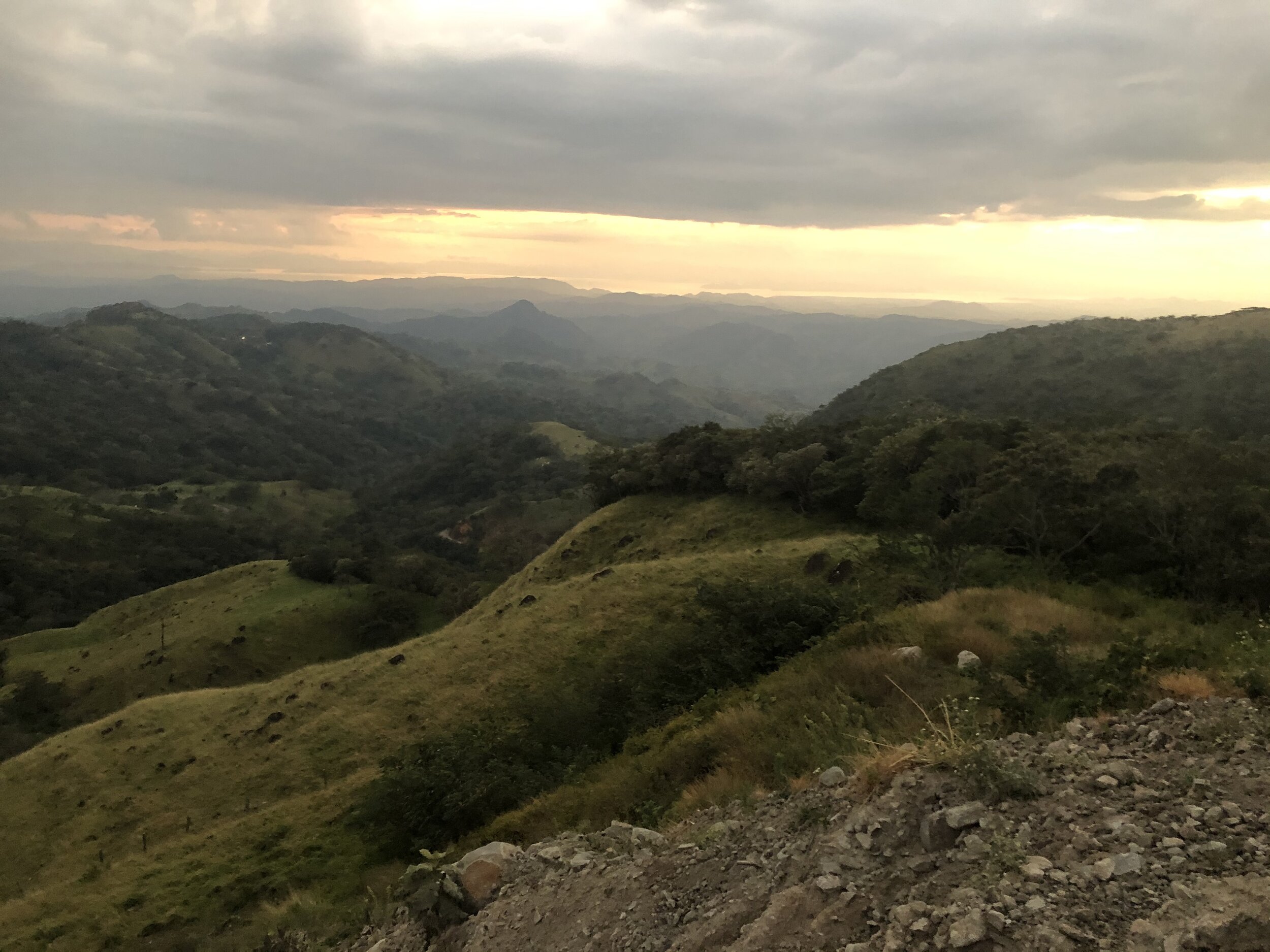Costa Rica: Day 1 and 2
Hola amigos! I'm in the land of pura vida (pure life -- aka Costa Rica) and will be here for two weeks as part of a MU Journalism field reporting course on environment, sustainability, and agriculture. For those who have followed my travels for awhile now, this may sound familiar to you -- it's actually my second time visiting Costa Rica! While we write for a school online publication and are in the process of writing an e-book about the Bellbird Biological Corridor, I'm going to use this platform to share more personal adventures while on this trip and give tips for any of you who may come to Costa Rica in the future.
1st Night + Arrival (January 2, 2020)
Soo, we arrived! I was dressed in joggers and a hoodie with another jacket on top. Once we got into Costa Rica, I quickly realized that would no longer be necessary in 96 degree heat. While this wasn't my first rodeo, going through Customs and all the processes upon arrival can still be scary and especially time consuming with a group of 10 students and 2 professors.
Once we made it through, we met our in-country coordinator Carla and our bus driver Wilson to prepare for a 1.5 hour drive to La Ensenada where we would stay for the first night. Carla purchased dinner and snacks for us as an introductory meal to Costa Rica, given that it was 10:30pm and most every establishment was closed for the evening. I had a 6-inch veggie Subway sandwich and it was SO good - it had fresh avocado and I was in love. Ok.
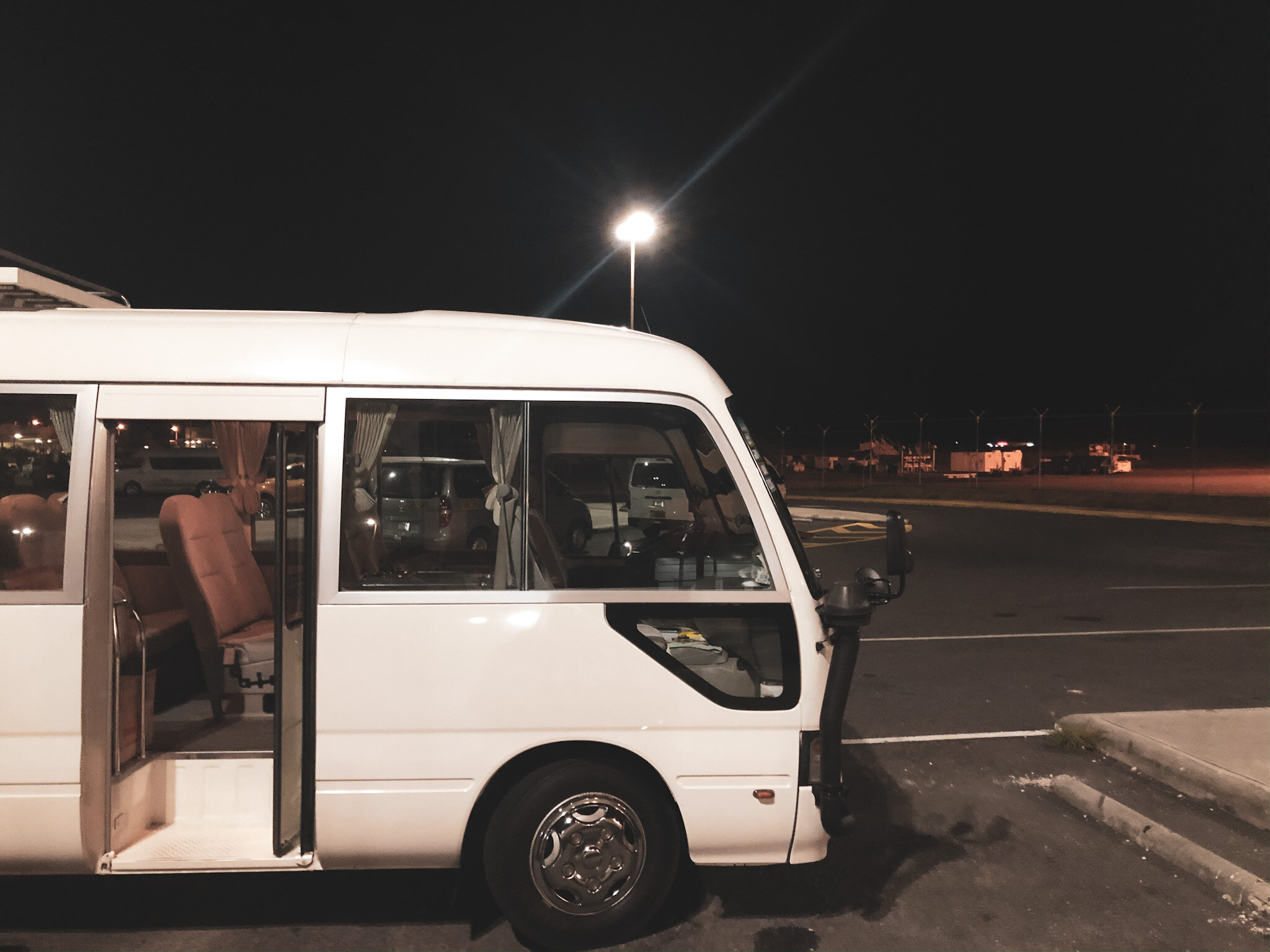
The bus ride to La Ensenada was dark and I had no idea where we were going. My bus ride was a mix of in-and-out sleeping and turning my phone on and off to try and get it to work and adjust back to CT. We arrived at the hotel, located off the Pacific Coast in the province of Puntarenas on the Gulf of Nicoya, and it's 2am.
You're probably curious about living arrangements so I'll give you the quick tea -- our hotel room didn't have air conditioning or heat (common in Costa Rica) and was similar to a log cabin with screens that let the outdoor air in. It was HOT, but it was cool to be ~one with nature~ and hear the animals as I fell asleep.
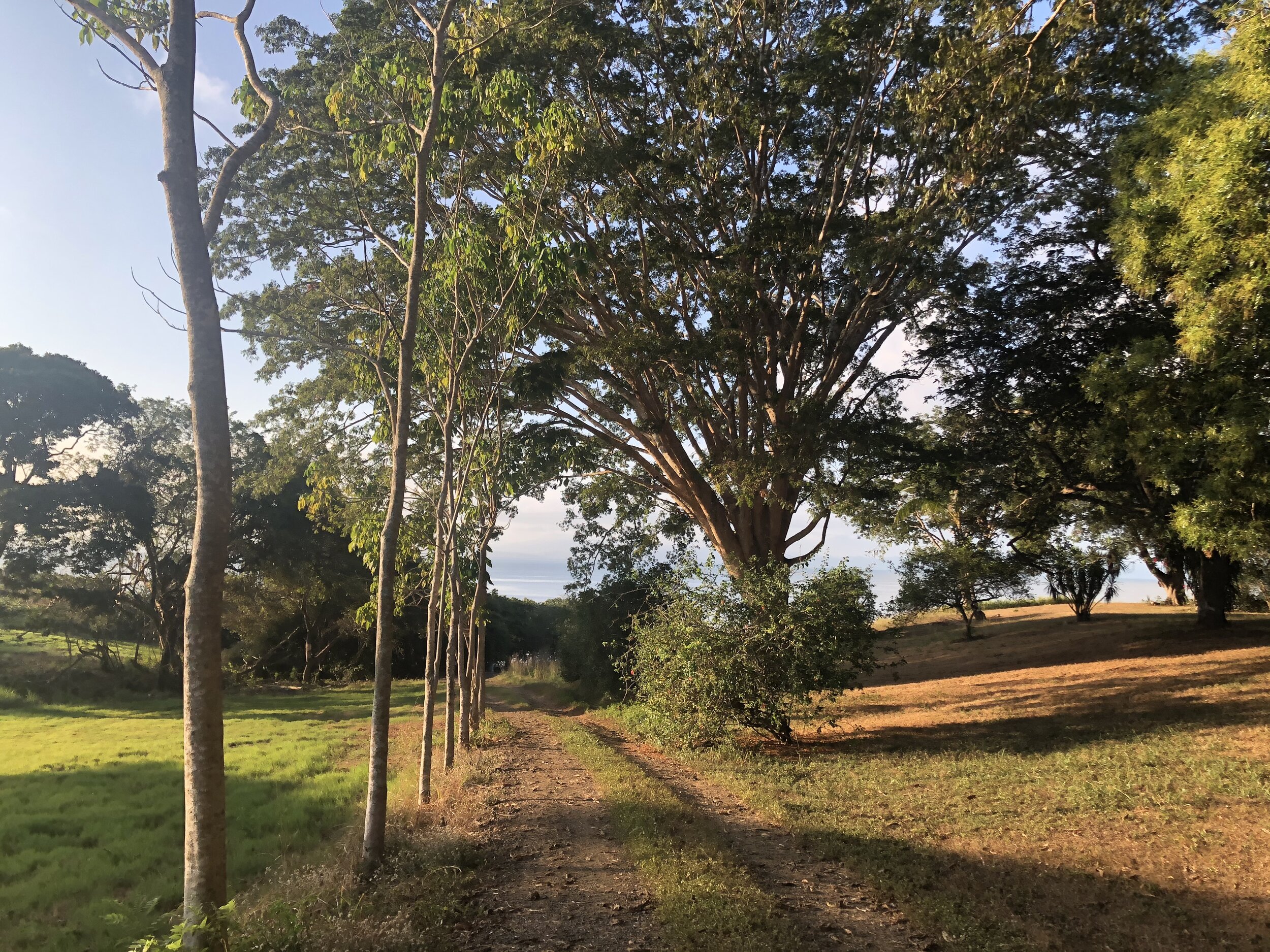
Desayuno
Before breakfast, my roommate Paige and I walked out and saw that there was a path leading to the waterfront. Because we had a few moments before we had to be at breakfast, we decided to head out! The walk to the water revealed a long wooden bridge to a platform, so we braved the creaky boards over the thrashing water and ventured onward. Upon looking up after a few careful steps we saw Carla, our Monteverde Institute tour guide and logistics coordinator for the course, and we were reassured that we too could make it to the platform. We did and it was beautiful!
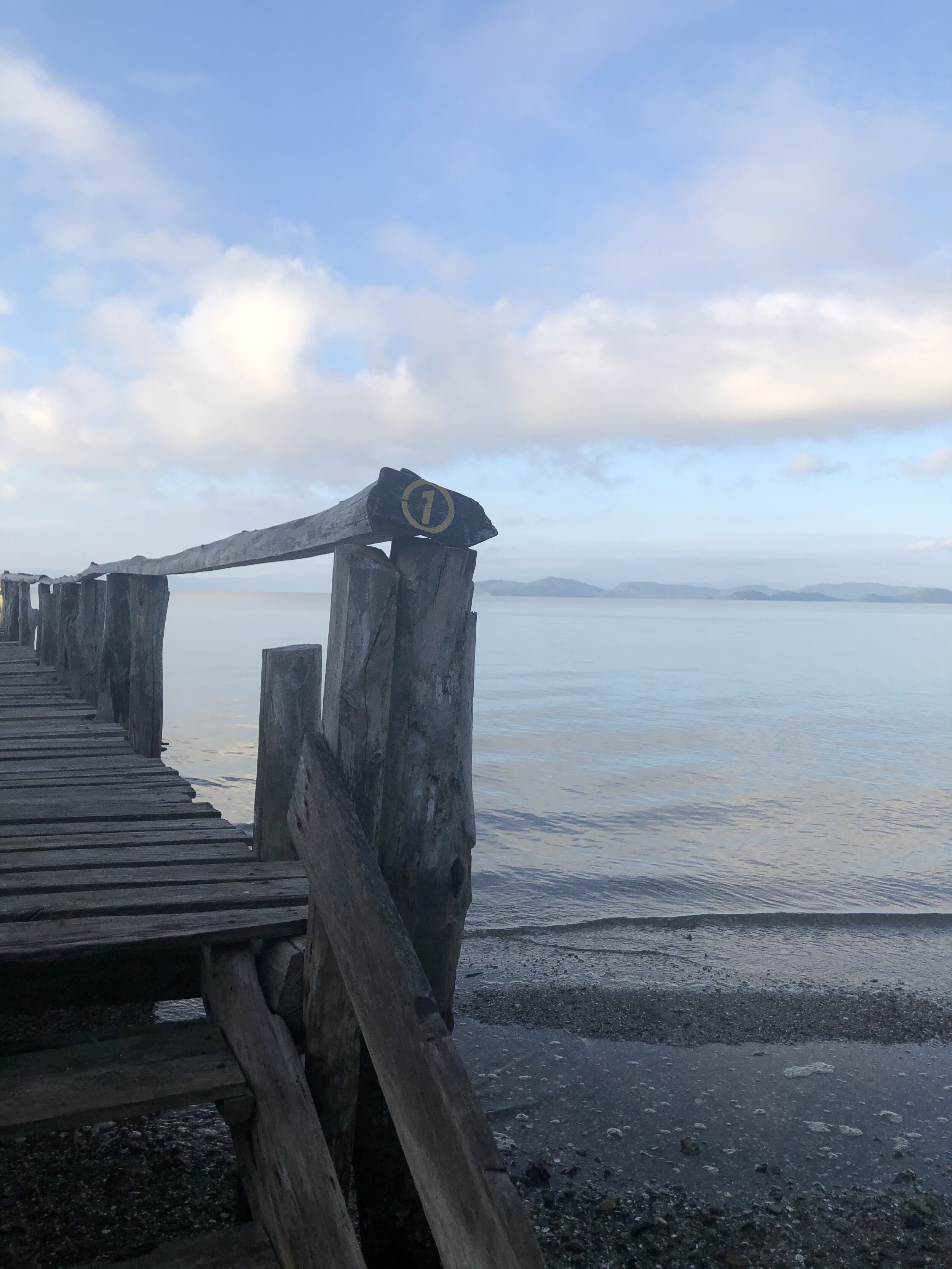
Then it was time for breakfast and it was very traditional Costa Rican style with rice and beans, coffee/juice, scrambled eggs, "squeaky cheese," and fresh pineapple, cantaloupe, papaya and watermelon. SO GOOD. What I love about the other places that I've been is that mealtime is (1) intentional and not rushed, and (2) the meals are made from scratch almost every time. Costa Rica is no different and I savored the delicious meal with 3 cups of coffee.
Set Sail
Our first "field visit" was to a rising shipping transportation company, SailCargo. This is a Canadian-based company developed with the idea that transportation can change the world.
We started our tour of the "makeship shipyard" with Maikol, a Costa Rican native, and John, a director on the project. Interesting fact: 15 cargo ships produce DAILY the same amount of fossil fuels as 1.3 BILLION CARS! Everyone is talking about sustainable homes and electric cars, but the discussion about cargo ships is relatively untapped. SailCargo looks to fundamentally change the shipping industry via multiple means, but the most notable is its Ceiba vessel, the 1st fossil fuel cargo ship on an American continent.
The shipyard also has "Boaters Construction School," the social impact bent of the entire project, with classes for local Costa Ricans to enroll in and learn about building and constructing boats. 16 fishermen have since graduated from the program.
I'm On a Boat
We left SailCargo by boat and we had to take off our shoes to enter the water. It was really muddy and I had mud in between my toes for the rest of the day!
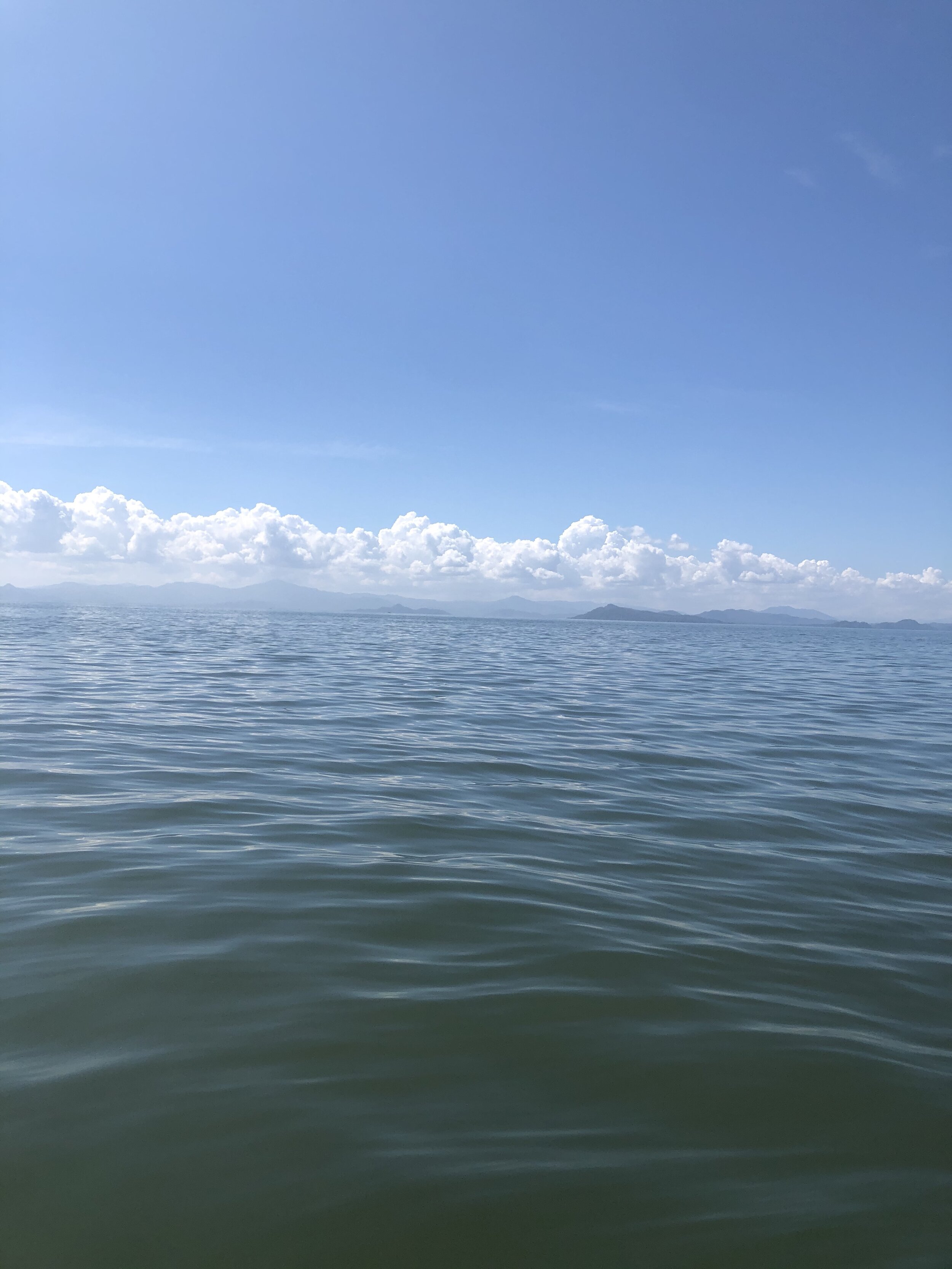
We ventured further into the mangroves, the most important ecosystem in Costa Rica (according to our tour guides). All of the mangroves are protected by law and Costa Rica has even more stringent rules pertaining to the environment. There are "buffer zones" that work as a buffer in dramatic weather systems like tsunamis.
One of the procedures our professor has implemented into this trip is one minute of silence at each of our locations to truly soak up the sights, smells, tastes, feelings, etc. of what we see. The call of birds is like a warm welcome - so many calls from different species echoing in the forest. Our boat turned with the current and we saw the Nicoya Peninsula in the distance. We were in a body of water that felt both eerily familiar and incredibly foreign - think Lake of the Ozarks without development. At most, the undeveloped mountainside had a few homes right at the coast and an electric pole near the shoreline. My hand dangled above the water like a kid with the window down, enjoying the warmth that we didn't have this time of year in Missouri!
Birds from Missouri venture to Costa Rica in the winter time (similar to Missourians traveling out of the state for winter!) and we got to see some of them! 3 birds wizzed past only an inch or two above water. We also saw an oyster farm that had over 400,000 oysters. Only 4% of oysters in Costa Rica are produced by Costa Rica and surrounding countries, mainly for tourist destinations and restaurants.
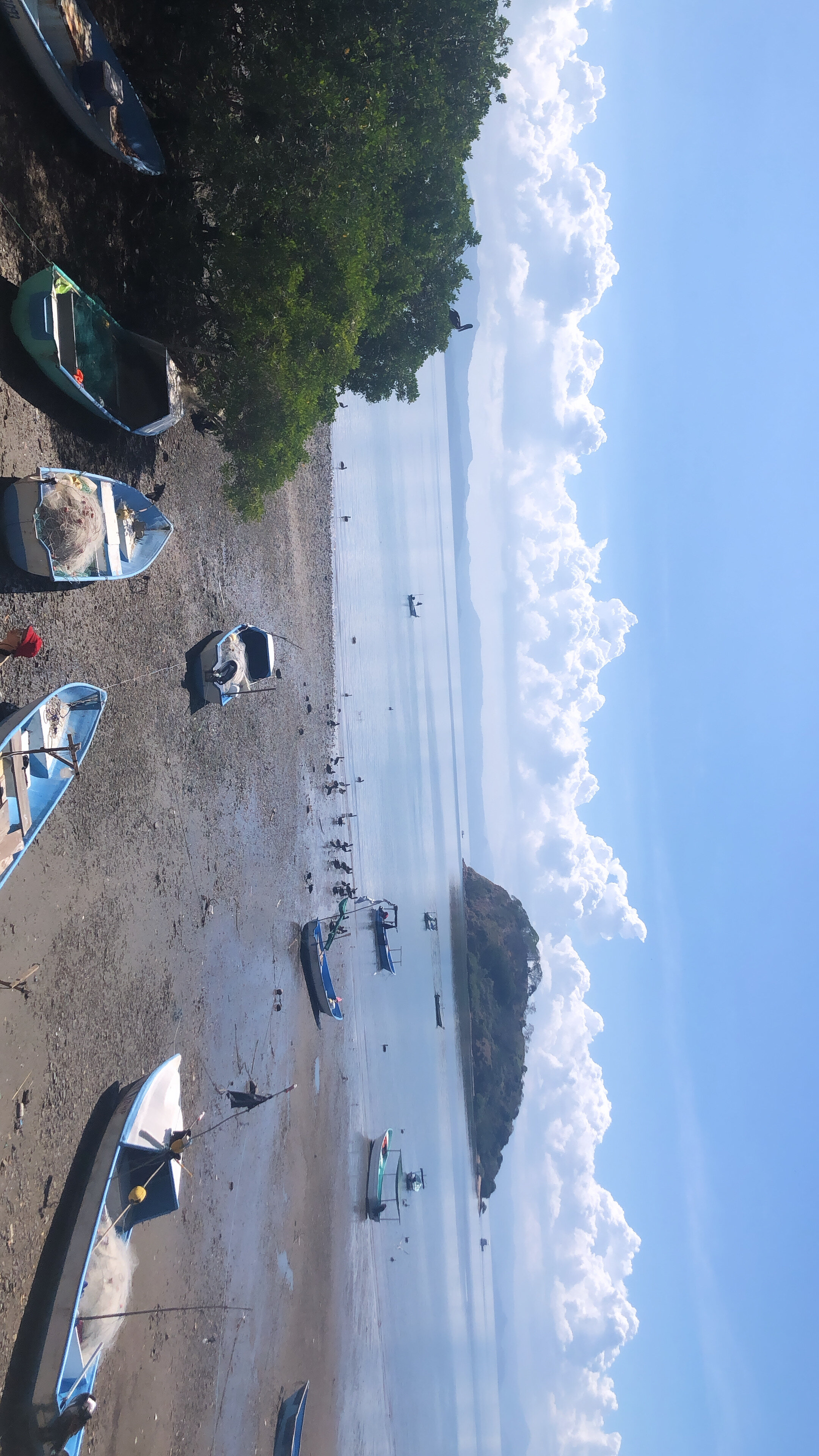
Lunch + Costa de Pajeros
As we approached the shoreline of Costa de Pajeros, the sounds of more birds, laughter, and a constant chopping of wood became louder. The bright colored structures, in hues of lavender, mint green, and pink. A few rows of bright blue boats line the shore. We get out of our boat (barefoot again) and manage to tiptoe our way to the sand and up to the home of Manrique Alvarez where we have a home-cooked Costa Rican lunch.
Manrique is a former fisherman in the area and is now more focused on the distribution, collection and storage of seafood. He discussed responsible, sustainable fishing with us and why it's important.
His family opened their home to our class and set tables and chairs up outside for our meal. His wife, with her hair in a tight black bun, has a smug expression but begins to smile when her husband refers to her as the "boss of all." She was very kind and prepared a delicious meal for us with fish/chicken, tortilla, beans and rice, among other things.
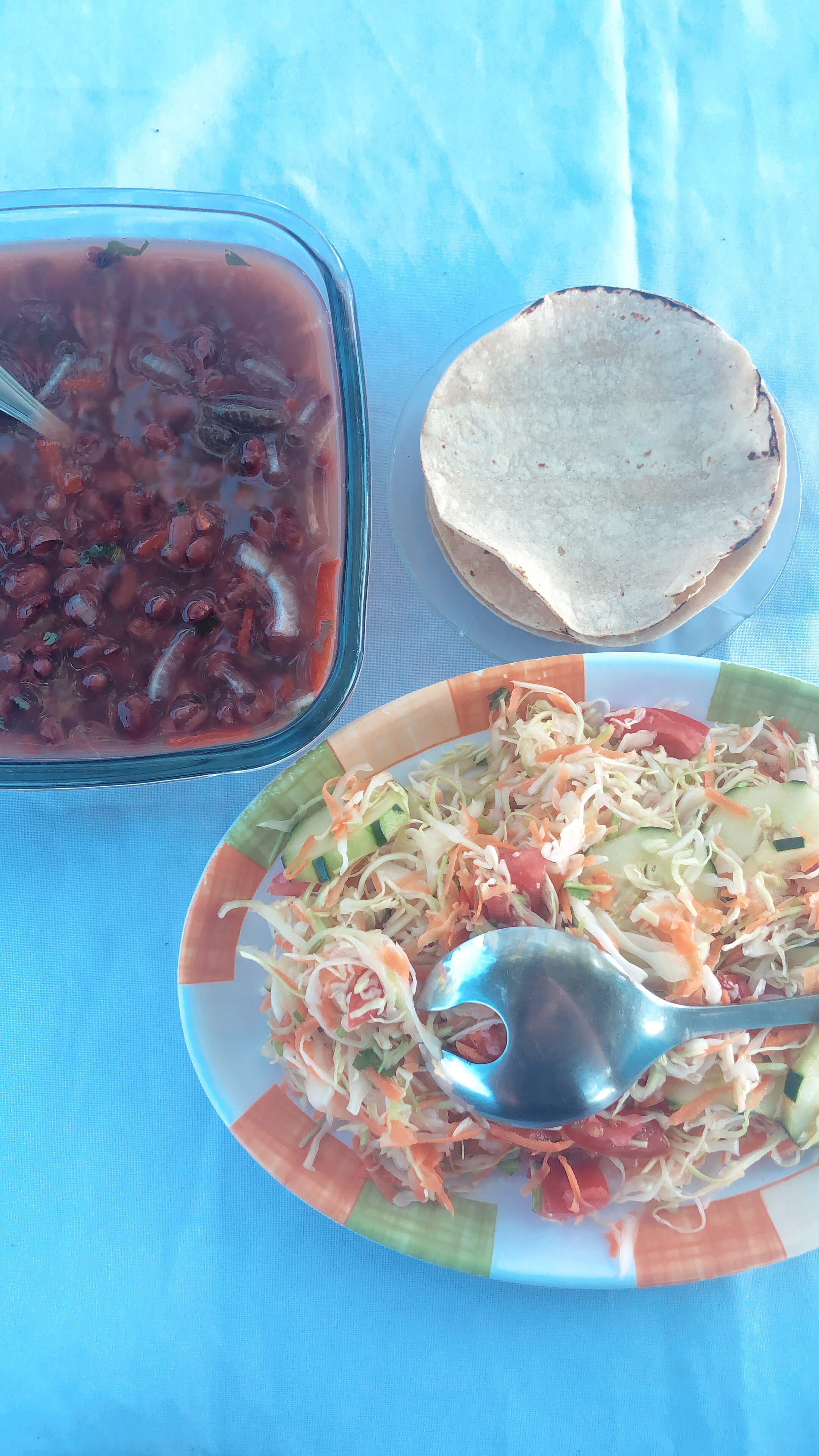
The entire thing - from the meal itself to the lovely Costa Rican family we met, to the scenery and views - was beautiful and it reminded me just how lucky I am to be doing one of my favorite things (writing) in the country of pura vida (pure life). There are few things in life that make you feel most alive, most content, most complete...but the ~one with nature~ vibes in Costa Rica are pretty close to it.
SailCargo Round 2
After lunch we headed back to SailCargo to meet with the co-founders Danielle and Lynx. The effort is actually comprised of 3 separate entities: Saba (for-profit company), Asado Verde (non-profit), and SailCargo Inc. (registered agency in Canada that serves as the agent for the effort).
Danielle and Lynx met aboard a ship in the Dominican Republic and have since worked on SailCargo together. Lots more to come on SailCargo in my blog post for the class - but it's a really interesting project and is an excellent example of the international community coming together to fund and support a project that is making global and local impact. The makeshift sailyard in Punta Morales is in one of the poorest districts in the entire country and the project seeks to employ at least 50% Costa Rica natives by the end of 2020.
I was particularly impressed by Danielle and her role as CEO. She wanted to set the precedent that a for-profit company can do more and she's conscious about being an environmental and socially effective company, beyond the "green image" often projected by for-profit companies latching onto the newest trends. She discussed the problems with traditional non-profits, how to operate a business with a strong corporate social responsibility bent, and how to incorporate and empower locals and their communities in the process. It makes our world seem a little smaller when we're working together on projects like this.
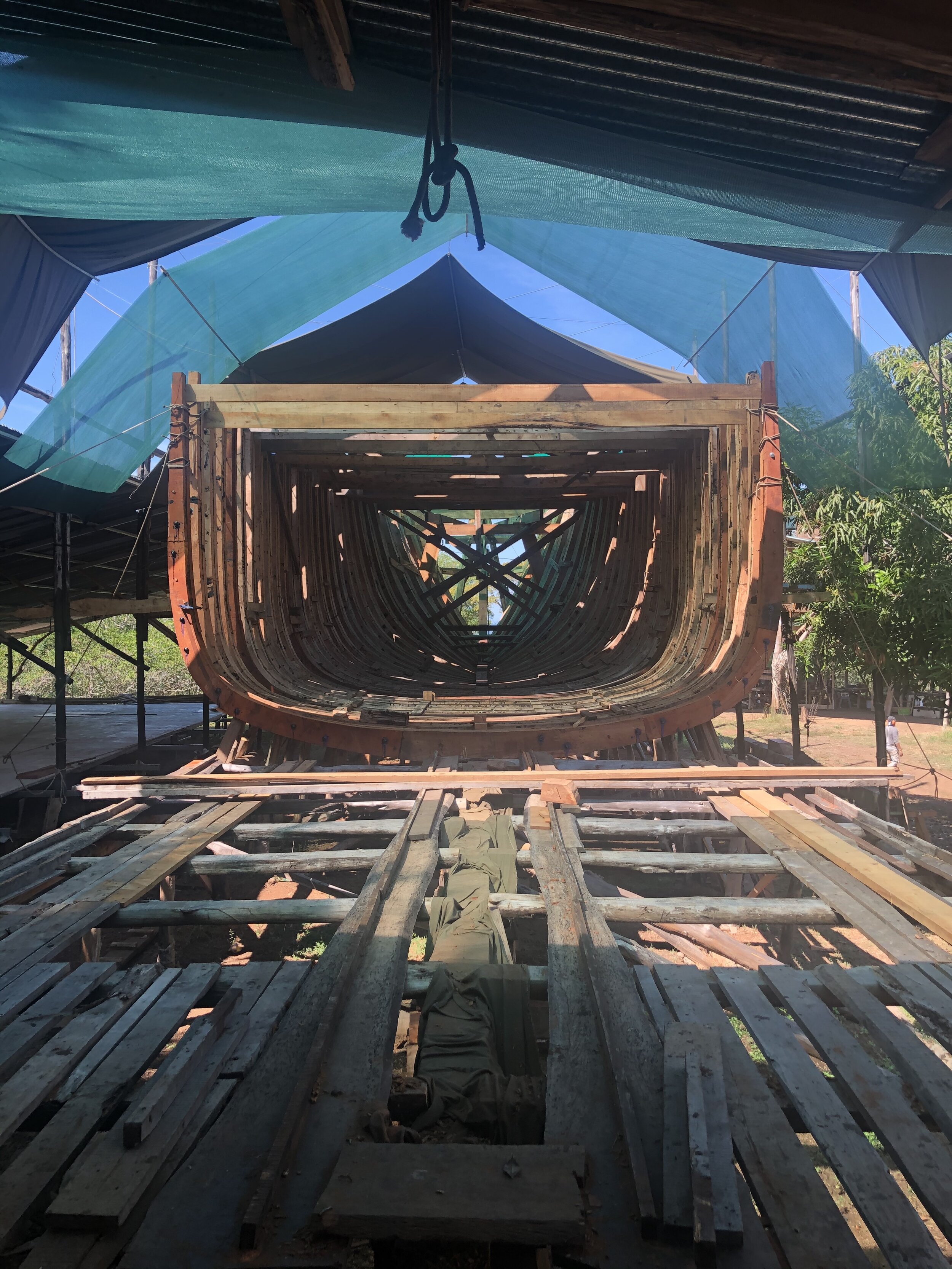
If you're anything like me, the shipping industry is largely foreign. Sure, in Missouri we're surrounded by rivers that are essential to trade, but if you're not directly involved it's often a drive-by. Here are some facts I learned from Danielle and Lynx:
- Shipping uses the lowest quality fuel in the world. It's actually solid enough that you can walk on it.
- In this Costa Rican community, it can cost up to $1000 ($500-$1000 typically) per month for gas for a boat. Comparatively, a 2 bedroom home costs $100 a month to rent. By transitioning to sailing even a little bit families will save money.
- This particular boat (Ceiba) is funded by 130 investors so far, most not from Costa Rica, and every investor has reached out to the project to get involved. Over 25 nations are represented by volunteers/interns who have collectively dedicated over 70,000 hours to the project.
One special thing about this meeting: it happened IN THE BOAT. We sat on the wooden framework of legit Noah's Ark (ok...it was the Ceiba but like it looked like Noah's Ark). It was really scary because you were walking on wooden beams to get to the middle of the boat and then you would take a seat on a wooden beam looking down at the ground. The space between the beams was big enough for my entire foot to fall through, but Danielle told us that the bulk of accidents happen when people get too comfortable in situations like this. They typically don't allow groups to go out into the boat but we were deemed worthy ;-)
That's it for the first two days of Costa Rica. More to come!
